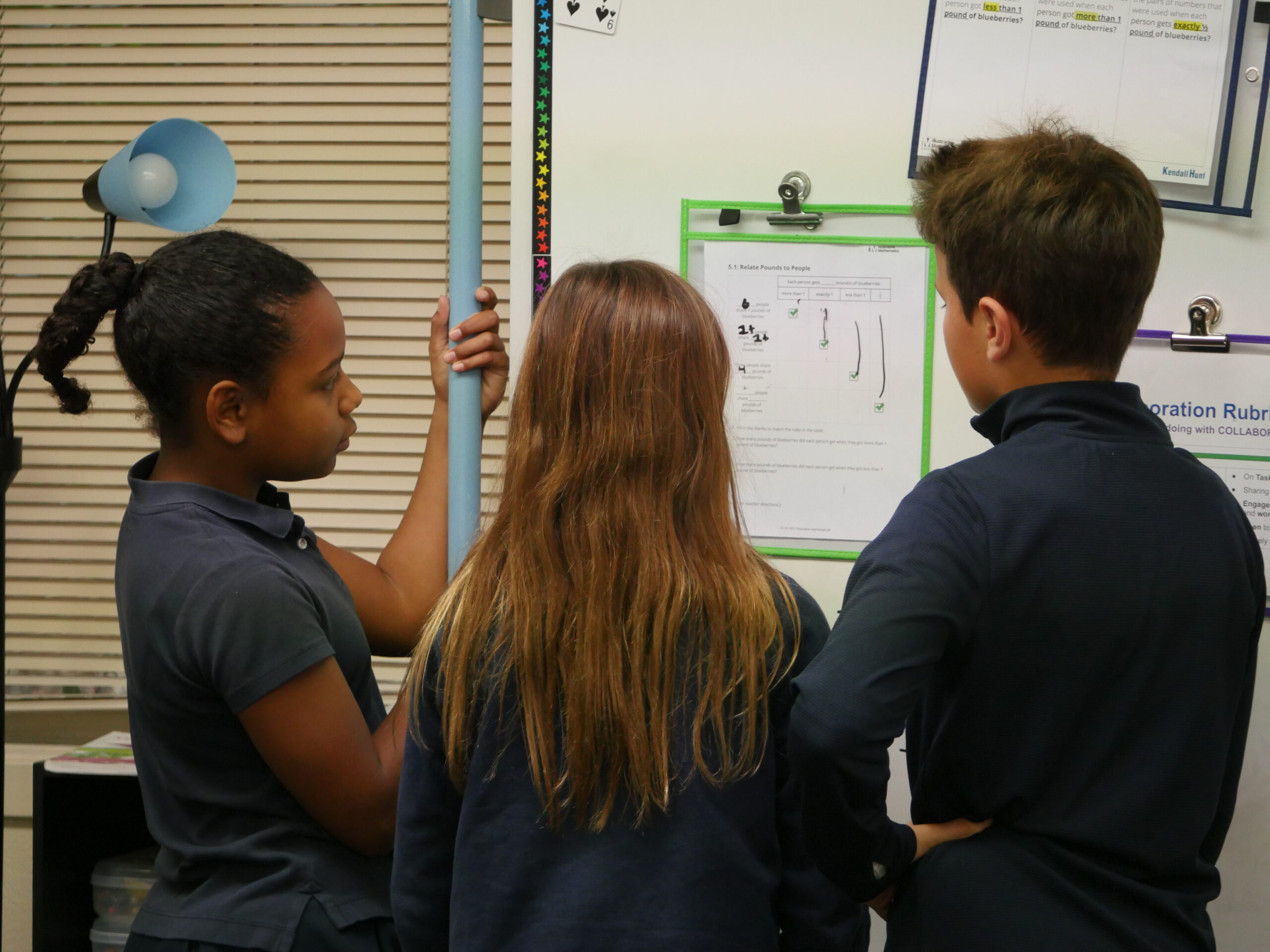“It’s the same I think. I tried two and 10 in the problem and they both worked out the same on both sides.”
6th Grade Mathematicians early last week worked on a set of spiraled review problems, revisiting content and processes from the year so far, but also extending back into prior year models and tools.
In preparation for their next unit solving single-step algebraic equations, students briefly revisited using and explaining area models to multiply multi-digit numbers. Then they extended those area models to include variables along one side of the rectangle. Fourteen times x + 2 can be broken into: the sum of 10 times x, 4 times x, 10 times two, and four times 2. Why?
Students also practiced evaluating expressions for equivalence and then justifying their claim that two expressions were or were not equivalent. At this stage of algebraic reasoning, students’ explanations and strategies are more important than fluency, or even accuracy. It was fun to watch students who can multiply very easily explain why something plus itself a number of times is the same as the product of those two numbers or how division and multiplication differ. Remembering things learned in first grade is sometimes the ticket to having a valid argument in middle school!

